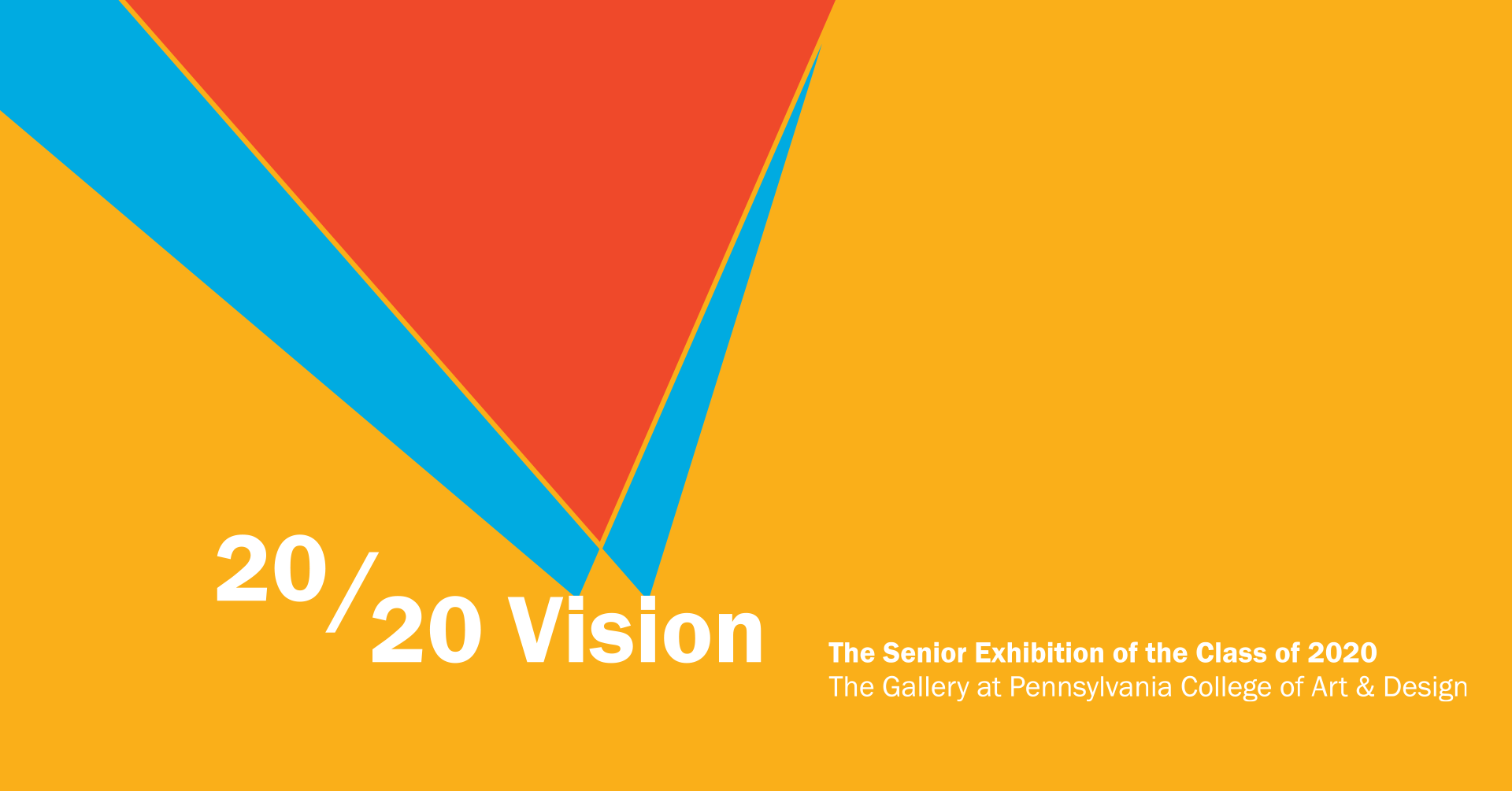
Announcing 20/20 Vision: The Senior Exhibition of the Class of 2020
Monday, August 31st, 2020
Pennsylvania College of Art & Design is pleased to present 20/20 Vision, an exhibition highlighting the Class of 2020. The exhibition features one piece from each of the 63 members of the class, and is now on display through Nov. 20, 2020, for the College community to enjoy.
20/20 Vision, which had been postponed from the Spring due to the COVID-19 pandemic, also will debut as a virtual exhibition in the near future. Its opening will be announced on the College’s social media accounts.
Six members of the Class of 2020 were selected for a special opportunity to co-curate the 20/20 Vision exhibition, which was installed over the weekend of Aug. 29-30. Each Curator was nominated to represent their major: Sage Aries Dougherty, Illustration; Dyneisha Gross, Graphic Design; Elizabeth Miller, Fine Art; Rainey Supple, Animation & Game Art; Karim Gavins and Adam Leitzel, Photography & Video.
As Curators, what are you hoping to achieve by this exhibition?
Elizabeth Miller: We hope this show exhibits the resilience and dedication of this particular class and hope that the show’s design as a whole sparks that same determination in the upcoming classes as well.
Adam Leitzel: This exhibition will be a small bit of closure to a very tumultuous and uncertain time. It will act as the final bridge of graduating and finally reaping the fruit of our labor. This show was postponed a few times, and at one point felt like it was never going to happen. The fact that it is here and that a student-run curatorial team meticulously crafted it is a testament to the Class of 2020’s perseverance and dedication to art.
Karim Gavins: I’m hoping this exhibition shows Lancaster and the PCA&D community that despite everything happening in the world and the impending massive changes coming, we as artists are still curious, strong, and always ready to adapt to what’s to come.
Are there any concepts you hope to convey?
Dyneisha Gross: My hope for us is to design an exhibit in our small, homey gallery that shows how we as a class have grown closer and supportive of one another since the College closing. Without a proper goodbye and celebration, we’ve grown closer to one another to find new solutions to an irregular problem. This show not only groups a year of work we have put into creating these projects, but it also showcases our growth.
Adam Leitzel: When people see this show, I want them to understand that being an artist is not easy. The expression “hindsight is 20/20” is ingrained in the experience of being an artist. The show title 20/20 Vision is very fitting. To the graduating class, I hope that they look back and appreciate the education that they received, and look at how they have personally grown as a person and as an artist. I hope that people viewing this show as an outsider of the PCA&D community take the time to reflect and look back on how art has helped them move throughout their lives. Whether it be a favorite album, a movie, a particular photograph, painting or sculpture, or their treasured mug they like to drink from.
Have you uncovered particular issues, motifs, or ideas explored by the Class of 2020? Did you find common threads throughout the artworks?
Rainey Supple: There were several ideas and motifs that were shared by different projects. Even though they were from different disciplines, some pieces shared … similar concepts such as family ties, storytelling, sexuality, feminism, and product design.
Did you choose to arrange the works in these threads?
Elizabeth Miller: What we didn’t expect was how easy it would be to draw connections between so many different styles of work. This show is organized with intention, and in doing so, we hope to do every piece justice in its display.
Rainey Supple: Yes, in regards to certain topics, we have decided to group them together, as well as space works from each other to avoid clashing of concepts.
Karim Gavins: The works were arranged in a way that allowed each individual to exist with others who spoke a similar visual language.
How does the placement contribute to the meaning behind the artworks?
Elizabeth Miller: Placement was the most difficult aspect of this exhibition and the most exciting.
Dyneisha Gross: Specific pieces were placed in specific galleries depending on its subject matter, but we also wanted to take accessibility within the Gallery into consideration. While working around 101 different obstacles— like limited space in Gallery One due to the temperature-taking line now present due to COVID-19 and new iterations to the Gallery—it was difficult to place works with intent, and we took important things into heavy consideration.
What strategies did you use to develop a relationship between the artwork and the viewer?
Dyneisha Gross: For a lot of the curators, we agreed that grouping works by topic, subject, and color palette worked best.
How do the arrangement and presentation support the artwork connections you found?
Rainey Supple: There was a lot of time put into the arrangement of the artworks. As a group, we wanted to make sure no piece was out of place and that everything flowed cohesively. Pieces similar in concept or subject matter were grouped together, such as product designs, promotional film posters, and heavier topics.
What do you intend the viewer of this exhibition to experience?
Adam Leitzel: We live in a world where we are bombarded with images, design work, and other visual media. 95 million images are uploaded to Instagram daily, which is such an abstract number. I want the audience of this exhibit to consider the amount of effort that goes into being creative. The final product is all that is ever seen, and there is not too much consideration for the process. The average time a person visiting a museum looks at a piece of art (is) 15 to 30 seconds, which, compared to the amount of time and effort put into making, is not that much. I hope that the viewer can find at least one piece in this exhibition that really connects with them, that they can contemplate and meditate on, and sticks with them long after they have left the physical or digital gallery.
Did you find being a part of the Class of 2020 a benefit in curating this exhibit? Can you elaborate on the advantages you may have found?
Rainey Supple: Yes, we did. Having been a part of the Class of 2020, we have more personal knowledge of the themes and concepts that our peers wanted to convey with their works. Knowing this, we are able to help arrange the artwork in a more meaningful way.
How is being an artist in the exhibit a challenge?
Rainey Supple: Being an artist, I felt the need to give every piece its own spotlight, knowing how much time and dedication went into each project. However, we had to work with the reality of the situation and compromise in the positioning area so everything can fit.
Elizabeth Miller: I think that the Class of 2020 is a unique one, full of problem-solvers, creative thinkers, and resilient individuals. I have great respect for my peers, and I am honored to have weathered 2020 alongside them. Now it is a great honor to have our work displayed together. As a curator, my primary goal was to give my classmates the dignified, elegant, and highly regarded display that their work deserved.
Adam Leitzel: Being an artist featured in this exhibition was not too challenging, but it made me a little self-aware. I felt I was trying to be equal in my judgment to all of the artwork, making it difficult in the placement or presentation of mine. On the one hand, I want to highlight my skills as an artist, but I also don’t want to abuse my position as a curator to elevate myself above my peers. That hyper self-awareness made me go in the opposite direction where I didn’t pay too much mind to where my work was going and left it up to my fellow co-curators to decide what to do with my piece.
Sage Aries Dougherty: I found being part of the Class of 2020 and one of the curators to be a major advantage in structuring this exhibition. We understand the artworks, knew the subject matter, and the context for each artwork. This allowed us to pair the artworks into clusters by the context that crossed over from major to major.
How did you find working with a team of curators from different disciplines?
Dyneisha Gross: We really came together as a group. It was, amongst the many meetings I’ve attended, the most organized, smooth, and easiest to brainstorm and make decisions.
Elizabeth Miller: Working with other curators from across a variety of disciplines was largely a rewarding experience. Having a team of individuals who all see and think differently gave us a unique advantage in designing the best exhibit possible. This experience provided us much valuable insight into creating an exhibition that highlights a variety of different styles.
What do you think is the strongest aspect of this exhibition?
Dyneisha Gross: The strongest aspect is what cannot be seen. Collaboration and finishing. When COVID arrived, it left many us feeling incomplete, things went unfinished, and connections were broken. To have finished something and put our best foot forward to represent ourselves and our peers feels most fulfilling.
Adam Leitzel: I think that the strongest aspect of this show is the sense of community. The exhibition was laid out in a way that mixed all of the majors. We tried as a group to make sure there was diversity on every wall within each gallery space. There were some universal themes or aesthetics that we could see spanned across majors. This gallery show allowed the curatorial team to experiment with unlikely pairings that would otherwise never have happened.
Do you have a message to provide the world with to understand better the creatives in your cohort in the Class of 2020?
Adam Leitzel: All I can say is this time has been rough for everyone. If you know an artist in this show, or any artist in general, reach out to them and ask them how they are doing, and ask how their process of making is coming along. Art reflects our reality, and without support from friends and family, our reality can become dull and uninspired. Without the encouragement of the people we surround ourselves with, no one from the Class of 2020 would have gotten this far.
Elizabeth Miller: The resilience, perseverance, and dedication of these artists are not to be underestimated or overlooked. Our experiences bear so much weight in our practice and within our disciplines, and despite the circumstances under which we completed our degrees, we all do not doubt that each of us will go on to do great things.
Sage Aries Dougherty: I feel that the Class of 2020 is so much more than this single exhibition can convey. We are strong individualistic creatives who are embarking on the beginning of our journey as professional artists. 20/20 Vision gives each of us a chance to dip our toes in the ever-changing art world and is one step in finding our way as artists. I only hope everyone feels equally represented in this unfortunate time of difficulties. I do not doubt that the Class of 2020 will all go on to do great things, and I feel this exhibit highlights those things beautifully,
MEET THE CURATORS
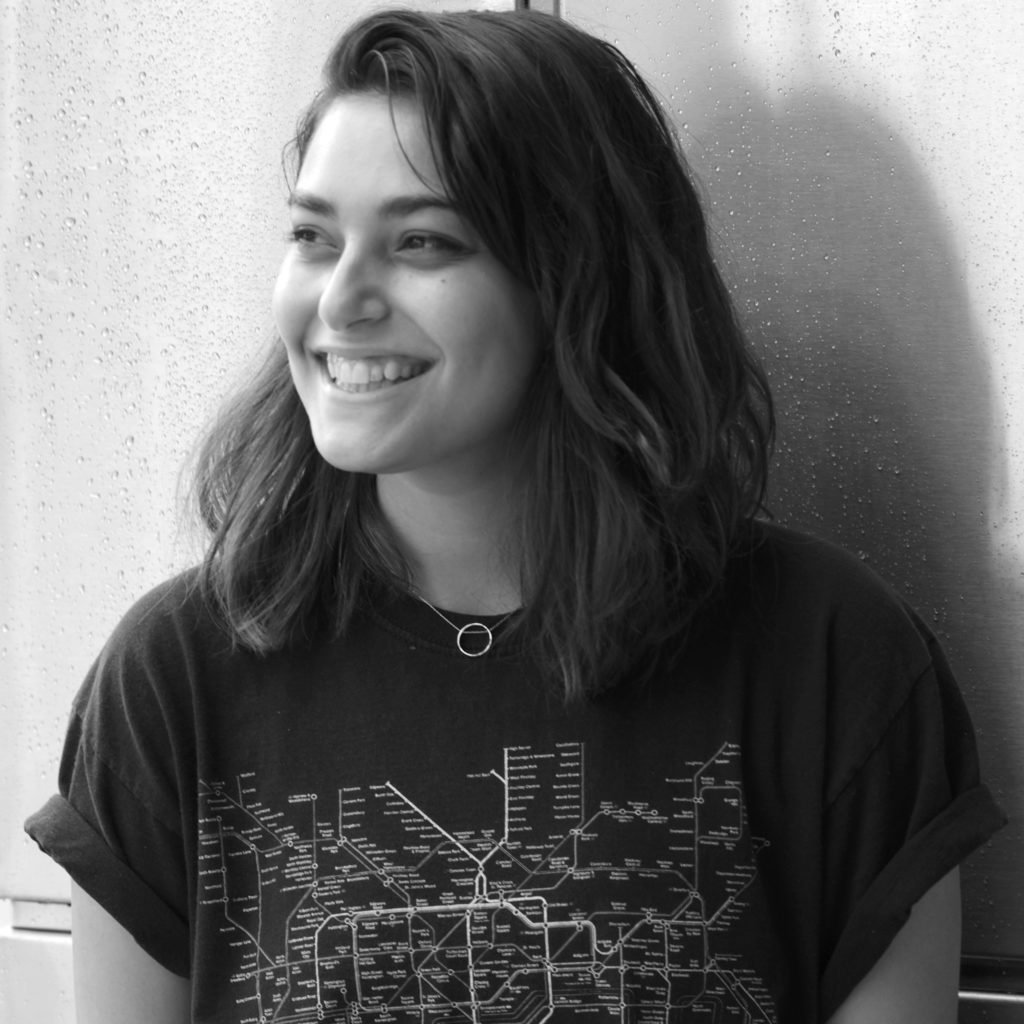
Sage Aries Dougherty | Lancaster, Pennsylvania, b. 1997 Illustration, BFA
Sage Aries Dougherty creates illustrations that spark joy. Dougherty’s designs feature color palettes that pop and a mixture of cute, quirky, and botanical elements created for household goods and fashion. She completed a mentorship with Meg Yoder, a designer for Anthropologie. Dougherty’s senior thesis consists of four collections of patterns and surface designs related to her ethnicity—an Irish baby collection, a Dutch kitchen collection, and a Native American pet collection. (Photo by Karim Gavins)
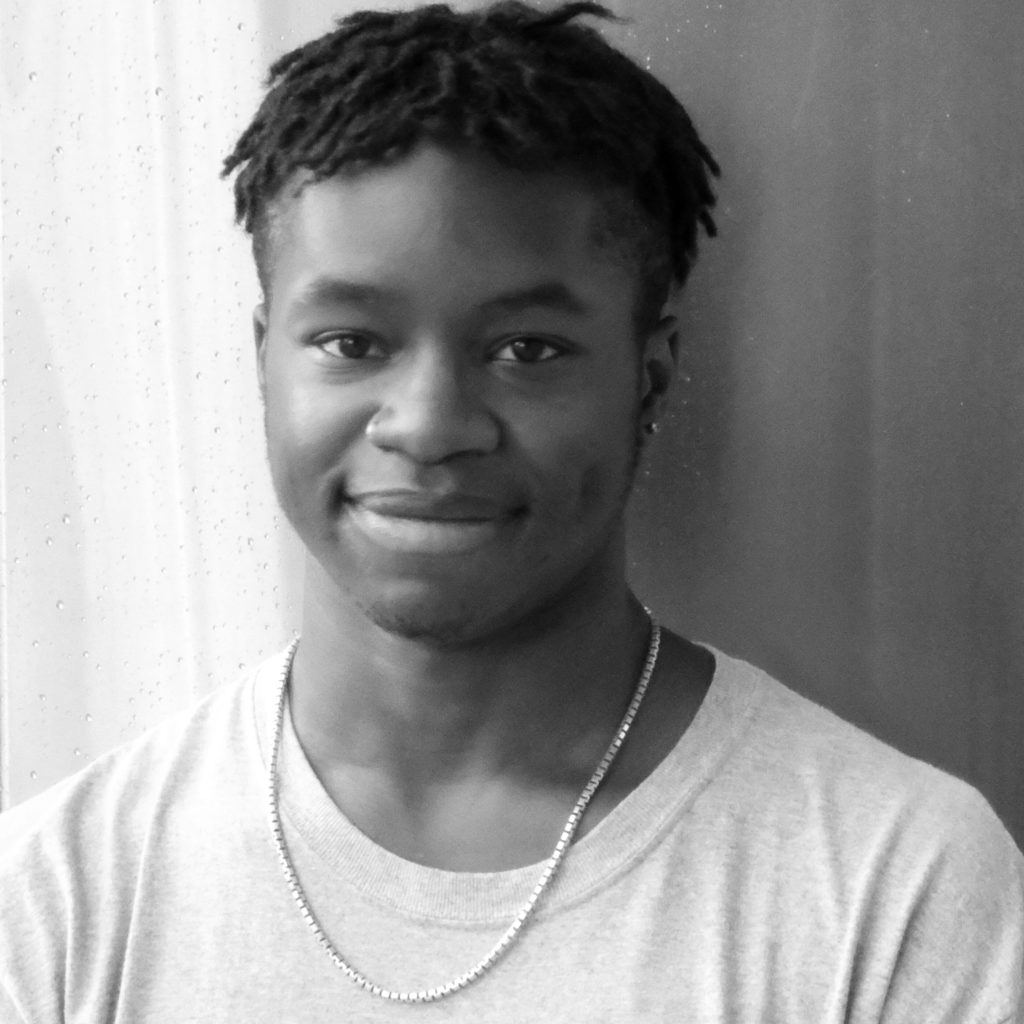
Karim Gavins |York, Pennsylvania, b. 1999 Photography & Video, BFA
Through his photography, drawing, and physical and digital manipulations, Karim Gavins explores the perception of identity and how it shapes the world around us. His work strives to define and redefine his many identities to find where he truly belongs. Gavins has exhibited his work at the Pingyao International Photography Festival in China, the International Exchange Exhibition at Keimyung University in South Korea, and Rock Lititz. In 2018, he was a finalist for Photographer’s Forum Best of College Photography and has received PCA&D’s Promising Artist Award. (Photo by Karim Gavins)
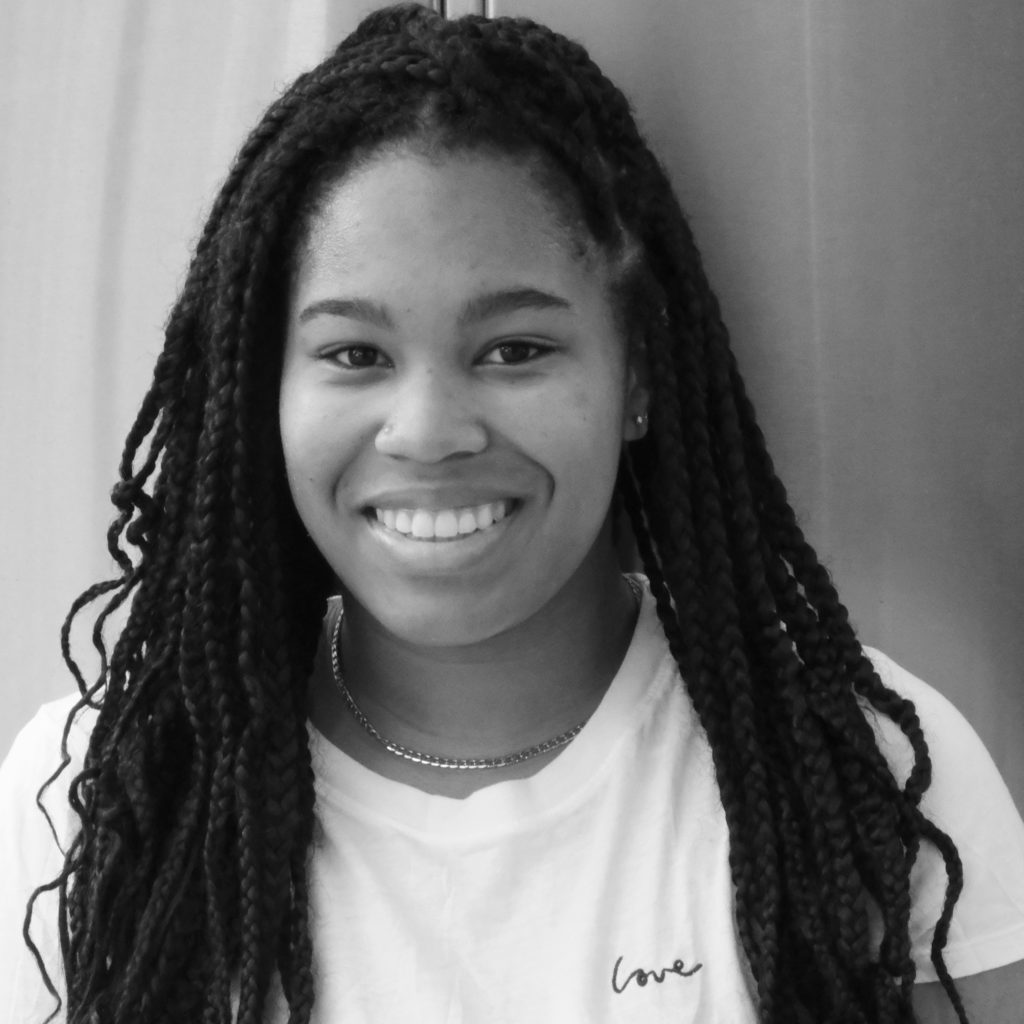
Dyneisha Gross | Baltimore, Maryland, b. 1998 Graphic Design, BFA
After a life-changing experience working for a large women’s health organization in Washington D.C., Dyneisha Gross decided to design with intent. She took the path of social design and impact as her work is centered around starting conversations and solving problems in minority communities through art and design. Her multidisciplinary work, nothing short of punchy and bold, landed her a top 50 spot as a Student To Watch in 2020 by Graphic Design USA and opened doors that now allow her to work with a nonprofit organization in Lancaster, allowing minority students to achieve higher education. (Photo by Karim Gavins)
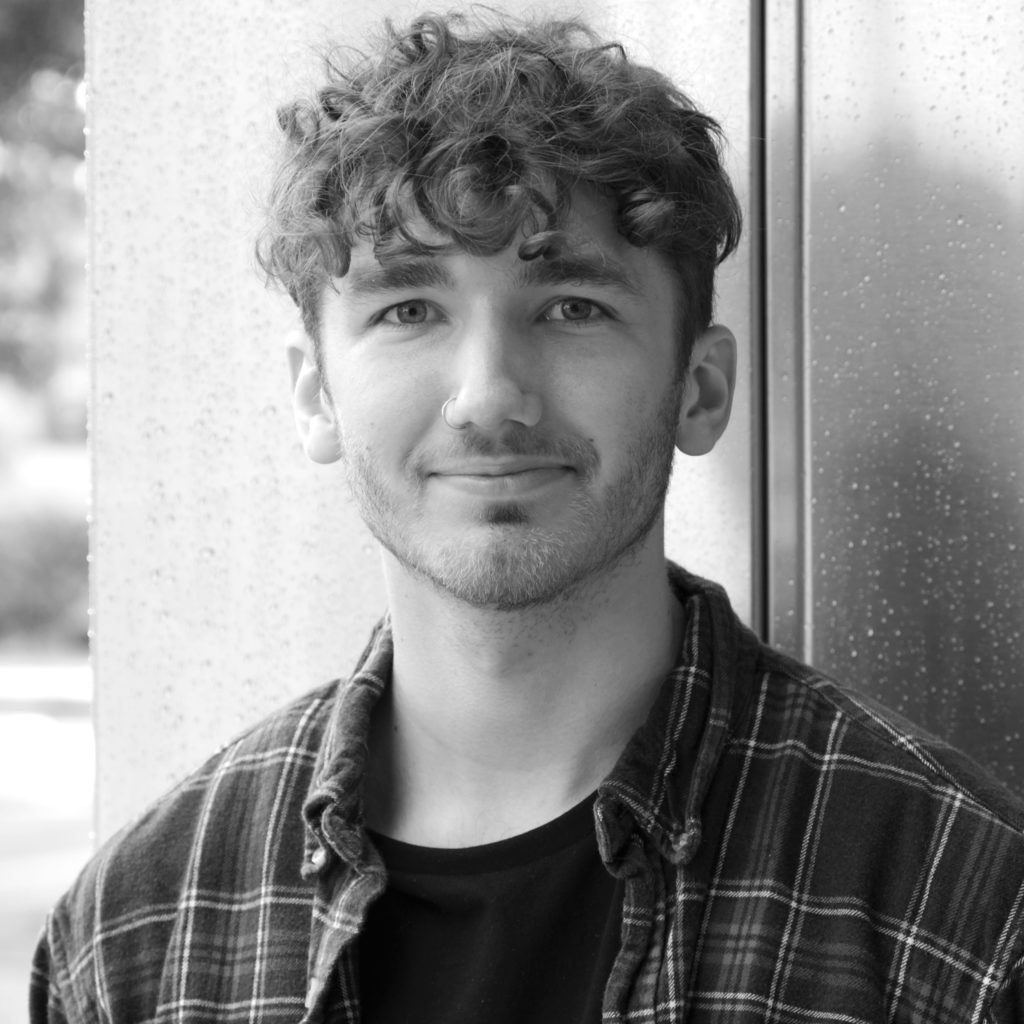
Adam Leitzel | Lititz, Pennsylvania, b. 1998 Photography & Video, BFA
Adam Leitzel’s work focuses on interpersonal struggles and his place within society. He utilizes documentary photography trappings to help drive a narrative throughout his work while still leaving the images open for interpretation. His work has been exhibited locally at the Demuth Museum, Rock Lititz, and Creative York. Leitzel has also shown internationally at the Pingyao International Photography Festival in China and Millepiani in Rome, Italy. Adam plans to open a printing studio with fellow alumni in the near future. (Photo by Karim Gavins)

Elizabeth Miller | Palmyra, Pennsylvania, b. 1997 Fine Art, BFA
Focused on the brain’s ability and inability to process trauma, Elizabeth Miller’s drawings, sculptures, installations, and textile works explore feminism, bodies, and the natural world. She relies heavily on object significance and artifact, resulting in work that is both a documentation of memory and a highly physical object in the present. Miller’s work has been included in several exhibitions, including at Station One Center for the Arts and the Lancaster Museum of Art. (Photo by Karim Gavins)
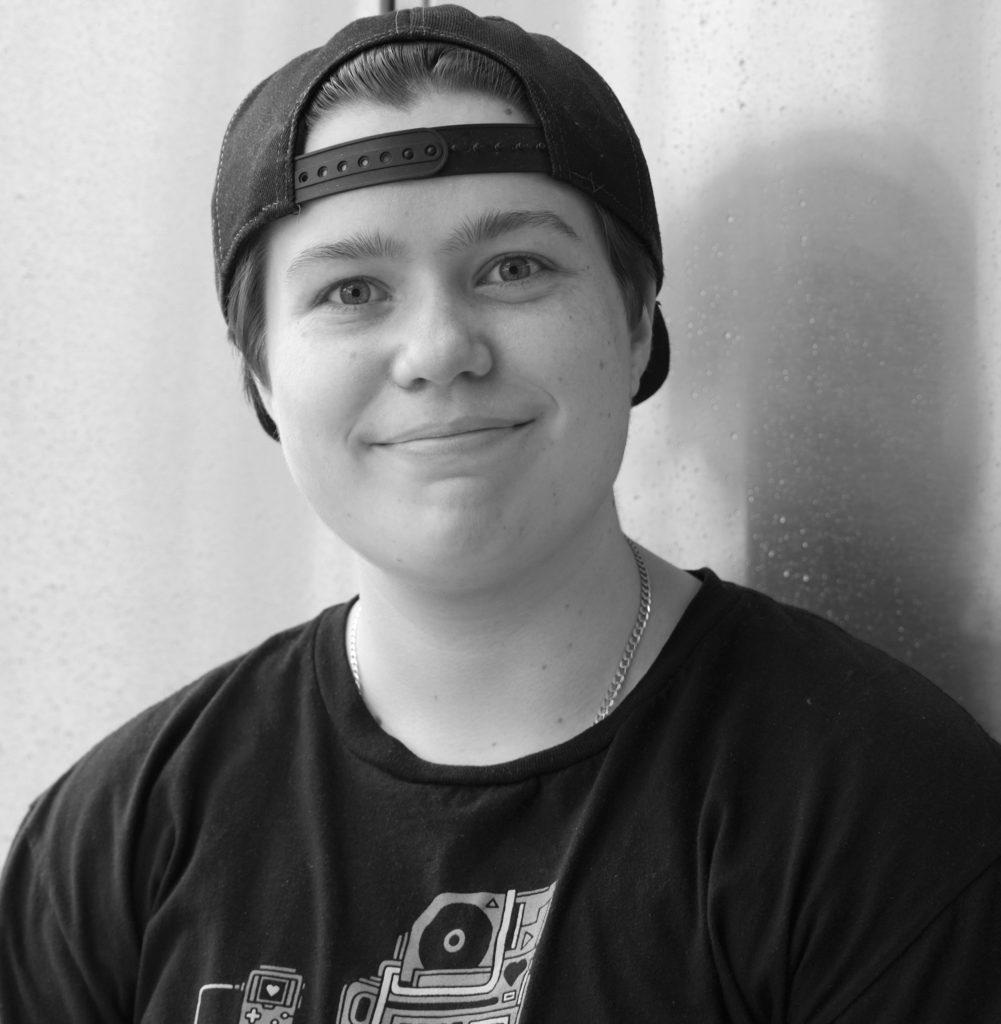
Rainey Supple | Saylorsburg, Pennsylvania, b. 1997 Animation & Game Art, BFA
Rainey Supple uses digital art and three-dimensional modeling to create intricately detailed objects and environments. Supple’s thesis is a trailer for an imaginary game called Flashback, about a grandson exploring the history of his grandfather’s old film studio and the dark secrets it hides. She completed an internship with Triode Media Group in Lancaster, Pennsylvania, and has made the Dean’s List multiple times during her academic career. Supple will pursue a career as a game environment artist. (Photo by Karim Gavins)
